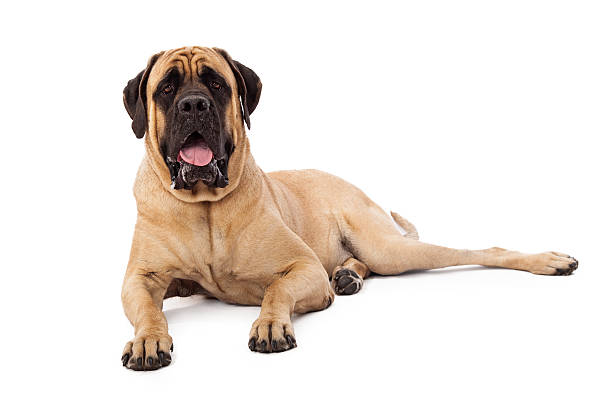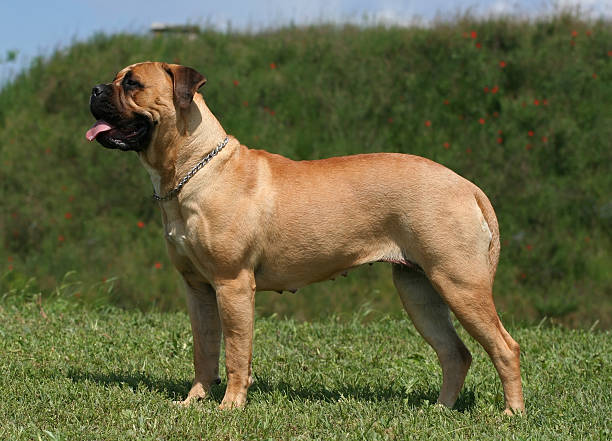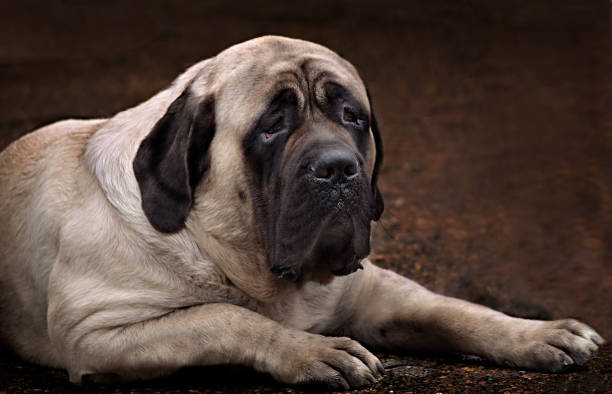English Mastiff

Breed History:
The English Mastiff, commonly referred to as the Mastiff, is one of the oldest and most iconic dog breeds, with roots dating back thousands of years. Depictions of Mastiff-type dogs appear in ancient Babylonian, Egyptian, and Roman art, where they were used as war dogs, guardians, and hunting companions. The breed as we know it today was developed in England, where it was historically used to guard estates and castles, and even to face off against wolves and intruders.
In medieval times, Mastiffs were known for their courage and strength, often employed in bear baiting and other blood sports until these practices were outlawed. Following near extinction after World War II, the breed was revived through careful breeding efforts. Today, the English Mastiff is known for its imposing size, gentle temperament, and deep loyalty to its family.
|
Gender |
Height |
Weight |
|
Male |
76 cm |
73–100 kg |
|
Female |
70 cm |
54–77 kg |
Size – Giant
Life Expectancy: 6–10 years

Breed Appearance:
The English Mastiff is a massive, muscular breed with a broad head, deep chest, and solid, rectangular build. It has a short, dense coat that comes in fawn, apricot, or brindle, usually with a distinctive black mask covering the muzzle, ears, and around the eyes. Despite its size, the Mastiff carries itself with calm confidence.
Its face features a wrinkled forehead and dark, expressive eyes that convey a gentle and watchful demeanor. The tail is long and tapers to a point, while the ears are V-shaped and set high on the head. The Mastiff’s sheer size is one of its most defining features, giving it a commanding yet noble presence.
Breed Type – Family/Guard:
The English Mastiff is a classic guardian breed, prized for its loyalty, protective instincts, and calm temperament. While it is naturally wary of strangers, it is rarely aggressive without cause and prefers to deter intruders through its size and deep bark rather than confrontation. It forms strong bonds with its family and is particularly gentle with children.
Despite its guardian instincts, the Mastiff is a laid-back and affectionate family dog that enjoys companionship and relaxed environments. It is not ideal for watchdog duties that require agility or alertness but excels as a loyal home protector who will stand its ground if threatened.

Training:
Training an English Mastiff requires patience, consistency, and gentle leadership. While intelligent and eager to please, Mastiffs can be stubborn and slow to respond if not properly motivated. Early socialisation and basic obedience are critical to ensure that the dog becomes well-mannered, especially given its large size.
Positive reinforcement methods, including treats and praise, work best. Harsh or forceful training should be avoided, as the Mastiff is a sensitive breed that responds better to calm, confident direction. Because of their naturally protective instincts, they should be exposed early to a variety of people, pets, and situations to develop into balanced adult dogs.
Health & Care:
The English Mastiff is prone to several health issues due to its size and genetics. Common concerns include hip and elbow dysplasia, heart conditions, gastric torsion (bloat), and joint problems. Responsible breeding and regular veterinary care can reduce the likelihood of these conditions.
Their large size means they age more quickly than smaller breeds, and maintaining a healthy weight is essential to prevent stress on the joints. Mastiffs do not require high-intensity exercise but benefit from daily moderate activity to maintain muscle tone and joint flexibility. Routine vet check-ups, a quality diet, and joint supplements can contribute to a longer, healthier life.

Living Conditions:
Due to their giant size, English Mastiffs require ample space, ideally living in a home with a yard. They are not well-suited to apartment life unless the space is large and the dog receives regular outdoor time. Indoors, Mastiffs are calm and relatively inactive, often content to lounge around with their family.
They are best suited to families that can provide consistent companionship, as Mastiffs do not enjoy being left alone for long periods and may develop separation anxiety. Due to their size and tendency to drool, some adjustments may be necessary to accommodate them in the home. Soft bedding and cool areas are ideal, as they are sensitive to heat.
Exercise:
Despite their enormous size, English Mastiffs have moderate exercise needs. Daily walks and light playtime are typically enough to keep them fit and happy. They do not require strenuous activity and should be protected from overexertion, especially as puppies, when their growing joints are particularly vulnerable.
Because they are prone to joint issues and bloat, exercise should be gentle and spaced away from mealtimes. Short walks and supervised time in the yard are perfect for maintaining health without putting unnecessary stress on the body. Mental stimulation, like training sessions and puzzle toys, also helps keep them engaged without overexertion.
Grooming:
The English Mastiff’s short coat is easy to care for. Weekly brushing with a rubber curry brush helps remove loose hair and promotes healthy skin. The breed sheds moderately year-round, with increased shedding during seasonal changes.
Due to their facial wrinkles and tendency to drool, their face and neck should be cleaned regularly to prevent irritation and infection. Routine care should include ear cleaning, nail trimming, and dental hygiene. Bathing is only needed occasionally unless the dog becomes dirty or develops a noticeable odor.

Advantages:
-
Loyal and deeply bonded to its family
-
Calm, gentle temperament, especially with children
-
Naturally protective without being overly aggressive
-
Low exercise and grooming requirements
-
Minimal barking unless provoked or alerting
-
Majestic and noble presence; an excellent deterrent to intruders
Disadvantages:
-
Very large size can be challenging in smaller homes
-
Shorter lifespan compared to smaller breeds
-
Prone to health issues like hip dysplasia, bloat, and joint problems
-
Requires early training and socialisation to prevent behavioral issues
-
Can drool excessively, especially after eating or drinking
-
Needs patient, confident handlers; not ideal for first-time dog owners









